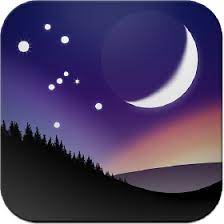If you are looking for latest setup of Stellarium then you have visited at the right place. From this page you can get the latest setup. Basically, Stellarium is a free planetarium program that displays stars, constellations, deep sky objects, comets, planets and moons. The program also includes a satellite tracking function that shows the movements of things like geostationary satellites and the International Space Station.
You can keep track of new comets and asteroids using the 'Solar System Editor' plug-in available in the Configuration Window (F2). This enables you to download orbit data from the Minor Planet Center.
Features
Stellarium is essentially a virtual planetarium and it can be used to learn about constellations or simply to gaze at the stars in awe. It displays an incredibly realistic night sky model and also includes a gigantic collection of online imaging and sky object catalogs.
The interface is very intuitive and it's easy to change the direction that you are looking (using 'Q'). You can even hide the ground and display the ecliptic and constellation lines. To move around you can use the arrow keys on your keyboard or a mouse roller wheel.
Download Stellarium
One of the coolest features is that you can travel back and forth in time. This allows you to watch stars change position over the course of a night or two. You can also set your view from different locations and download extra data like meteor showers or satellites.
Installation
The installation process is so simple, you will need to just download app from this page. Stellarium renders 3D photo-realistic skies in real time using OpenGL. It displays stars, constellations, planets and other celestial objects and also things like ground, landscape and atmosphere.
The software shows where various comets and asteroids are located at any given moment and allows you to keep its database up-to-date by clicking on the 'Solar System Editor' plug-in (via the 'Plugins' menu within the Configuration Window, accessed with F2). Newly discovered celestial bodies can be downloaded with just a few clicks, if they have a HIP number, an ephemeris and a set of orbital elements.
The program has a track function that enables users to follow the position of the sun and also a 'night-vision' mode that tints the whole sky red to help preserve the user's dark adaptation. Another very useful feature is the 'Oculars' plug-in which overlays the field of view of any eyepiece or telescope lens over the scene to assist with planning astrophotographs.
Free & Safe
Stellarium is an excellent and free astronomy program, but it doesn’t have the high-resolution graphics found on other programs such as Star Hopper or SkyView. It’s still worth a download though for anyone with an interest in the night sky.
The software comes with a catalog of more than 600,000 celestial objects and includes facts about each one. You can also add extra catalogs including over 177 million stars up to magnitude 18. The program also features a variety of other features such as a lunar phase calculator, an eclipse simulation and illustrations of the 88 constellation lines.
You can use the 'Viewer settings' menu to customise the view of the sky. For example, you can hide the ground and atmospheric effects; simulate light pollution and adjust the size of stars relative to their distance. You can even set the program to track the sun and advance time a day at a time. You can also select a telescope view mode to simulate the field of view of your telescope or eyepiece.
Runtime
Watching stars and observing constellations is one of the oldest hobbies in the world. There is something about the stars that evokes a sense of enigma and calmness. Stellarium is a 3D program that allows you to visualize the stars and planets in a beautiful manner.
It is a full-featured virtual planetarium with a default catalog of 600,000 stars and upgrade modules for even more stars and deep sky objects (DSO). There are also sunrise, sunset and atmosphere backgrounds. Other options include equatorial and azimuth grids, star twinkling, eclipse simulation, skinnable landscapes, a spherical panorama projection and a 'fish eye' view for curved screens.
Stellarium also has a useful information window that appears when you click on celestial objects. The window provides a lot of technical data about the object, including magnitude and catalogue numbers. You can change what and how much is displayed in the Configuration Window (F4). You can also customise the size of stars relative to each other on-screen, which is useful for planning astrophotography sessions.




